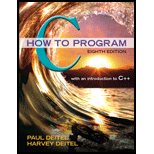
(Check Protection) Computers are frequently used in check-writing systems, such as payroll and accounts payable applications. Many stories circulate regarding weekly paychecks being printed (by mistake) for amounts in excess of $1 million. Weird amounts are printed by computerized check-writing systems because of human error and/or machine failure.
Another serious problem is the intentional alteration of a check amount by someone who intends to cash it fraudulently. To prevent a dollar amount from being altered, most computerized check-writing systems employ a technique called check protection.
Checks designed for imprinting by computer contain a fixed number of spaces in which the computer may print an amount. Suppose a paycheck contains nine blank spaces in which the computer is supposed to print the amount of a weekly paycheck. If the amount is large, then all nine of those spaces will be filled—for example:
11,230.60 (check amount)
------------------------
123456789 (position numbers)
On the other hand, if the amount is less than $1,000, then several of the spaces will ordinarily be left blank—for example,
99.87
--------------
123456789
contains four blank spaces. If a check is printed with blank spaces, it’s easier for someone to alter the amount of the check. To prevent such alteration, many check-writing systems insert leading asterisks to protect the amount as follows:
****9987
------------
123456789
Write a
Trending nowThis is a popular solution!

Chapter 8 Solutions
C How to Program (8th Edition)
- Explain any memory bugs in the code.arrow_forward(Thermodynamics) a. Design, write, compile, and run a program that determines the work,W, performed by a piston engine providing a force of 1000 N over a distance of 15 centimeters. The following formula is used to determine the work performed: W=Fd F is the force provided by the piston in Newtons. d is the distance the piston moves in meters. b. Manually check the values computed by your program. After verifying that your program is working correctly, modify it to determine the work performed by six pistons, each providing a force of 1500 N over a distance of 20 centimeters.arrow_forwardComplete the statements below:arrow_forward
- State whether each statment is true or false. If the answer is false, explain why? "The address operator & can be applied only to constants and to expressions."arrow_forwardUse Type Switches and Asertions sparingly function to write go code. Question is right , please donot reject it Output 70< nil>arrow_forwardFill in the blanks (using C programming) that gives the binary system numbers of the input. The output order should be as given and you are not able to change the code inside void decimalToBinary() and int main().arrow_forward
- Describe the statements of the function main.arrow_forwardIV) How do you change the default behavior of the print function that causes it to add a new line after each statement? PYTHONarrow_forwardState whether each of the following is true or false. If false, explain why i) The remainder operator (%) can be used only with integer operandsarrow_forward
- Problem description: In a car security system, we usually want to connect the siren in such a way that the siren will activate when it is triggered by one or more sensors. In addition, there will be a master switch to turn the system on or off. Let us assume that there is a car door switch D, a vibration detector switch V, and the master switch M. We will use the convention that when the door is opened D = 1, otherwise, D = 0. Similarly, when the car is being shaken, V = 1, otherwise, V = 0. Thus, we want the siren S to turn on, that is, set S = 1, when either D = 1 or V = 1, or when both D = 1and V = 1, but only for when the system is turned on, that is when M = 1. However, when we turn off the system, and either enter or drive the car, we do not want the siren to turn on. Hence, when M = 0, it does not matter what values D and V have, the siren should remain off. Instruction: Start by constructing a truth table, which is basically a precise way of stating the operations for the…arrow_forwardPlease solve and show steps, work, and information related to this problem. Thank you. The following C++ code performs a set of various arithmetic operations using both pointers and references: Fill in a memory table that shows the final values for both function a and function b. Indicate the final values of each parameter, passed in variable(s), and the return value of the function. Provide a separate copy of this memory table for each function.arrow_forward
 C++ for Engineers and ScientistsComputer ScienceISBN:9781133187844Author:Bronson, Gary J.Publisher:Course Technology Ptr
C++ for Engineers and ScientistsComputer ScienceISBN:9781133187844Author:Bronson, Gary J.Publisher:Course Technology Ptr
